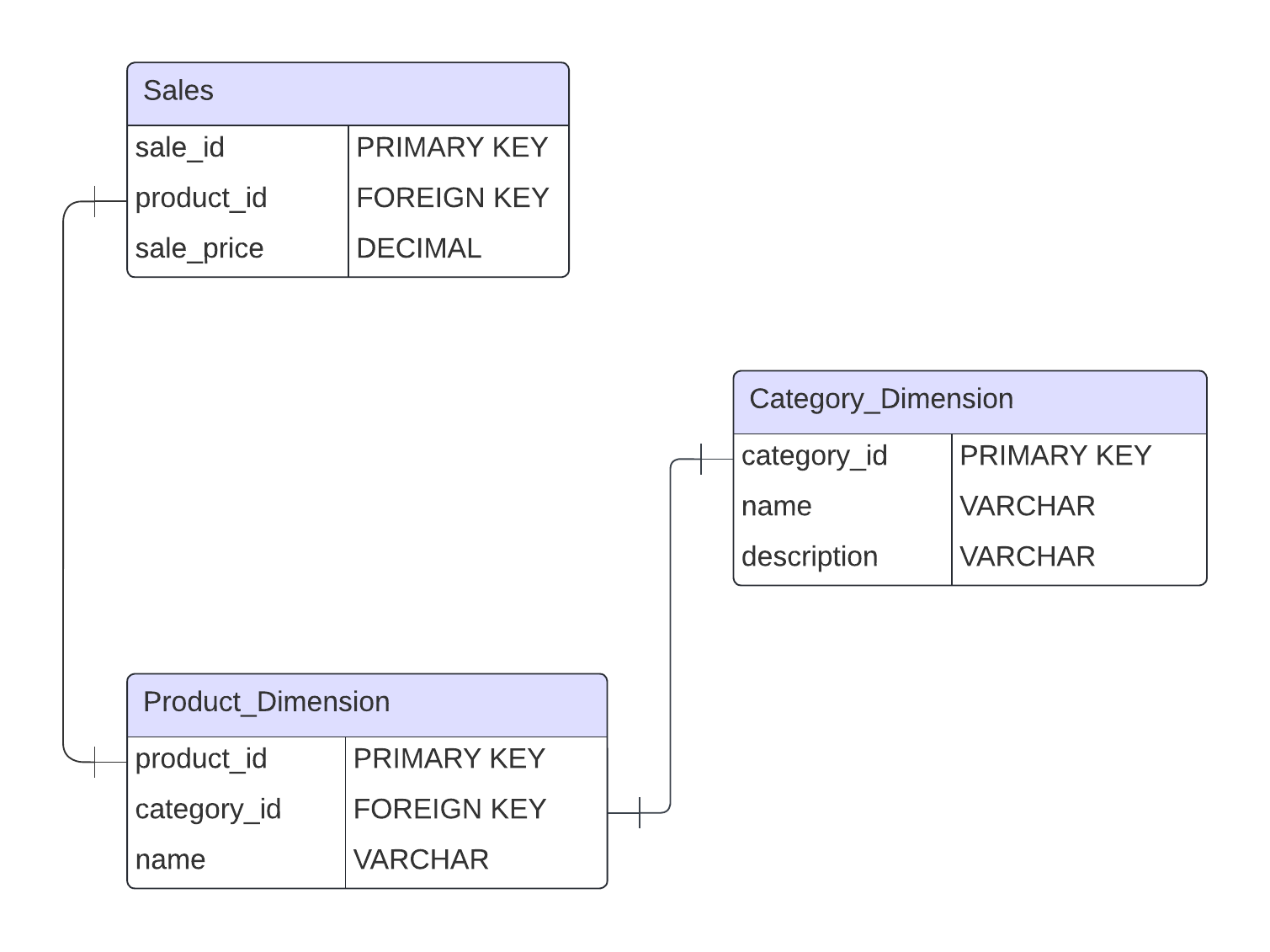Snowflake Schemas vs Star Schemas: a TLDR
TLDR: Star schemas have denormalized dimension tables, snowflake schemas have normalized dimension tables. Probably favor star schemas unless you really need a snowflake schema.
TLDR Version
Use star schemas if:
- Need fast query performance
- Storage is not a concern
- Want simpler maintenance
Use snowflake schemas if:
- Data consistency in your warehouse is critical
- Need to optimize for storage
| Concern | Star Schemas (Denormalized) | Snowflake Schemas (Normalized) |
|---|---|---|
| Storage | More redundant, higher storage needs | Efficient storage |
| Integrity | Potential inconsistencies | Overall better integrity from normalization |
| Query Performance | Faster (fewer joins) | Slower (more joins needed) |
Longer Version
Star Schemas
Star schemas are the most common data model used in OLAP systems. This includes examples like Snowflake, Redshift, Clickhouse, etc.
A star schema is composed of two different types of tables: fact tables and dimension tables.
Fact Tables
In a fact table, each row represents an event that happened at a particular time.
- Some columns in the table are attributes
- Cost of buying an item, the price of the item sold, etc
- Other columns are foreign keys to dimension tables
Dimension Tables
Dimension tables are used to represent the who, what, where, when, how, and why of the event. If we had a "sales" fact table, it might have these dimensions:
| Dimension Type | Example Dimension | Example Dimension Columns |
|---|---|---|
| who | customer | customer_name, location, phone |
| what | product | product_name, category, brand |
| where | store | location, region, market |
| when | time | date, month, year, season |
| how | shipping | delivery_method, carrier |
| why | promotion | promotion_name, discount_type |
Snowflake Schemas
The only difference between a snowflake schema and a star schema is that the snowflake schema's dimension tables are normalized.
Consider a simple sales database using a snowflake schema with a sales fact table, product dimension, and a category dimension (pictured below).
By normalizing the product dimension and referencing categories by id, any updates for a product's category (moving "Electronics" to "Consumer Electronics") only needs to happen in one place: the category dimension.

This results in:
Stronger data integrity
- Updates to category information happen in one place
- Can't accidentally have "Electronics" and "electronics" as different categories
Better storage efficiency
- Category details stored once, not repeated for every product
Single source of truth for data
- Each piece of information exists in exactly one place
- Easier to enforce business rules